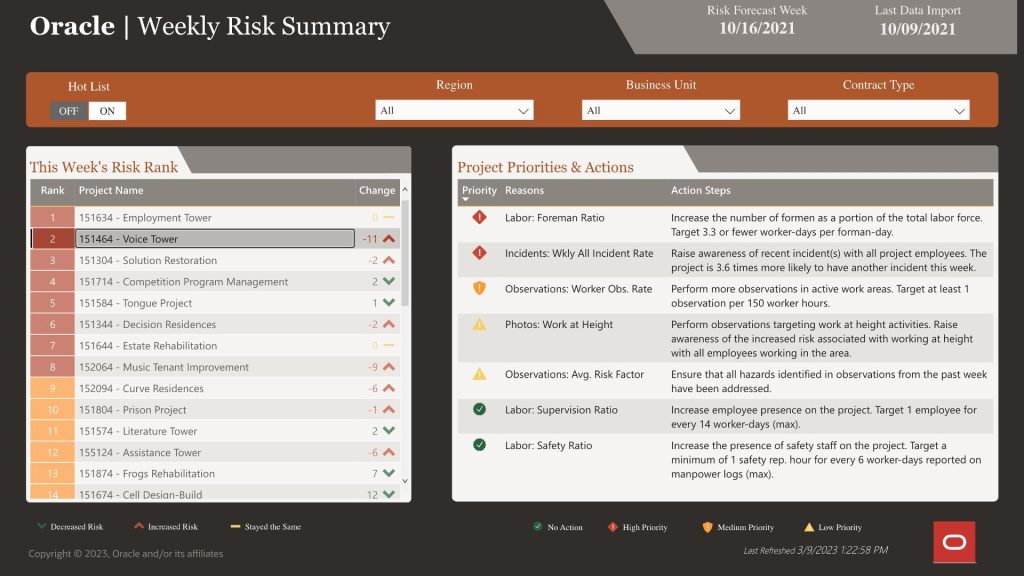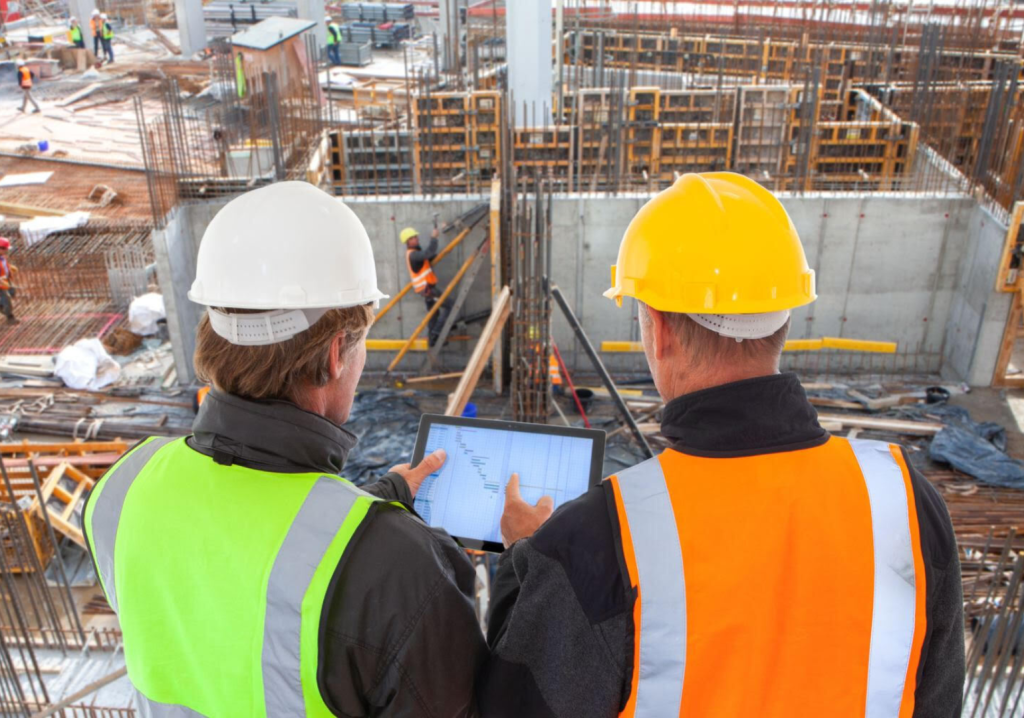Safety on Australian building sites has improved substantially over the past 20 years due to stricter regulations, mandatory training and more effective management systems.
But construction remains one of the most dangerous industries, accounting for nearly a fifth of work-related injuries or illnesses. Many result from human error or a failure to properly implement safety guidelines.
A unique software product equipped with artificial intelligence (AI) is helping to reduce the number of serious incidents still further by monitoring potentially hazardous workplaces and alerting users to breaches in safety protocols or situations where an incident is most likely.
Oracle’s Newmetrix, part of the broader cloud-based Smart Construction Platform, leverages predictive machine learning to act as a safety “risk radar” on any construction project. Newmetrix predictive models can identify which 20 percent of active projects will have over 80 per cent of safety incidents.
“The Oracle Newmetrix safety risk forecast incorporates multiple data sources, from safety observations and timecard data to the weather and even progress photos from the project,” said Oracle Senior Director of Product & Strategy, Josh Kanner.
“It then predicts where a safety risk may arise for an owner or contractor, and recommends actions.”

Photo recognition is an optional aspect of the system. It can be a powerful tool because the computer vision AI will recognise potential dangers such as crew members not wearing hard hats, unsafe scaffolding, unacceptable fall risks, guardrail issues, standing water dangers, faulty lifts or ladders, impalement hazards and even workers using an improper posture.
Better decision making
The system, the first of its kind in Australia, leverages lessons learned from past projects to inform future ones, thereby allowing better decision-making.
The “predictive intelligence” technology has already had a seismic effect on Oracle’s US construction clients, often reducing insurance premiums and the number of serious injuries.
- Three-quarters of all JE Dunn’s incidents were accurately predicted.
- Boldt reduced workers’ compensation costs by 75 per cent.
- Shawmut experienced fewer safety events than ever before.
- Each branch of Obayashi saved 60 hours a month spent on safety issues.
“There’s still a fear attached to using AI among some builders,” Kanner said. “They worry about data breaches, that they’ll suddenly need to learn coding or that it’ll inevitably take people’s jobs, but that’s really not the case with Newmetrix.
“For builders and owners, it’s an invaluable tool that’ll not only save them time and money, but better protect their colleagues from injury by anticipating any number of problems before they have a chance to occur. As every team member has access, they can be alerted to specific concerns in their areas of responsibility.”
Improving outcomes
As with any emerging technology, some jobs will no longer be required, but they will be replaced by roles linked to AI. For Kanner, it’s about augmenting human effort, not replacing it, as better outcomes occur when people are in the loop and using the right tools to make the best decisions.
“There’s still some trepidation among engineers when it comes to AI, and I understand that,” he said. “Educating yourself about the real-world applications of these new technologies is the best approach, and it doesn’t necessarily mean learning how to code.
“Most Newmetrix users won’t need to have any coding experience. It’s better to have a good, high-level understanding of the program you’re utilising and how it enhances what you’re trying to achieve, just as you would for any application.
“What’s critical in these early stages is finding the right tech partner for the entire journey so you can trust them to equip you with the best predictive tools to make every project as stress-free and efficiently executed as possible.”
Register for a free webinar, Assistive intelligence: a practical approach to AI, on 23 May.

